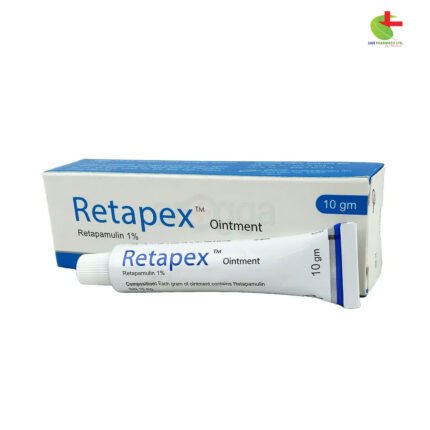Trego 2%
140.00৳ Ointment
- Trego ointment is a topical antibiotic effective against skin infections like impetigo, folliculitis, and furunculosis.
- Its active ingredient, Mupirocin, targets bacteria including Staphylococcus aureus and Streptococcus pyogenes.
- Mupirocin works by inhibiting bacterial protein synthesis, making it an effective treatment option.
- Safe for use in children aged 2 months to 16 years, Trego should be applied three times daily for up to 10 days.
 Brand
Brand
|
Incepta Pharmaceuticals Ltd |
|---|---|
 Generics
Generics
|
Mupirocin |
 Type
Type
|
Ointment |
Indications
Trego ointment is recommended for the topical management of impetigo, a skin infection caused by Staphylococcus aureus and Streptococcus pyogenes. It is also effective for treating folliculitis and furunculosis.
Please consult a registered healthcare professional before using this medication.
Pharmacology
Mupirocin is an antibiotic derived from natural sources, specifically produced through fermentation using the bacterium Pseudomonas fluorescens. This powerful antibacterial agent is effective against a broad spectrum of bacteria responsible for common skin infections, including Staphylococcus aureus (including methicillin-resistant strains) and Streptococcus pyogenes. Additionally, Mupirocin demonstrates activity against certain gram-negative pathogens, such as Escherichia coli and Haemophilus influenzae. The mechanism of action involves the inhibition of bacterial protein synthesis through reversible and specific binding to bacterial isoleucyl transfer-RNA synthetase. Notably, due to this unique action, Mupirocin does not exhibit in vitro cross-resistance with other classes of antimicrobial agents. When applied topically, Mupirocin is bactericidal, with the minimum bactericidal concentration (MBC) generally being eight- to thirty-fold higher than the minimum inhibitory concentration (MIC) for the relevant pathogens.
Dosage & Administration
Apply a small amount of Trego ointment to the affected area three times daily for a duration of up to 10 days. The safety and efficacy of Mupirocin ointment have been established for patients aged 2 months to 16 years.
Pediatric Use
The safety and effectiveness of Mupirocin have been confirmed for children aged 2 months to 16 years. This is supported by adequate and well-controlled studies involving pediatric patients with impetigo.
Please consult a registered healthcare professional before using this medication.
Interaction
No drug interactions have been identified with Trego ointment.
Contraindications
Trego ointment is contraindicated in individuals with a known hypersensitivity to Mupirocin or any of the ointment’s components.
Side Effects
Commonly reported side effects include burning, stinging, or pain at the application site, itching, and potential rash. Some patients may experience nausea, erythema, dry skin, tenderness, swelling, contact dermatitis, and increased exudate.
Pregnancy & Lactation
Animal studies on Mupirocin ointment have not indicated any fetal harm. However, due to the lack of clinical experience regarding its use during pregnancy, it should only be administered if the potential benefits outweigh the risks. The excretion of this drug in human milk is not well understood; therefore, caution is advised when administering Mupirocin ointment to nursing mothers.
Precautions & Warnings
Trego ointment is not intended for ophthalmic or intranasal use. Like other antibacterial agents, prolonged use may lead to the overgrowth of non-susceptible organisms, including fungi. Special care should be taken to avoid contact with the eyes, especially when applying the ointment to the face. Trego is not suitable for use in conjunction with cannulae or at the site of central venous cannulation. If sensitization or severe local irritation occurs, discontinue use and initiate appropriate alternative treatment for the infection. Avoid mixing Trego ointment with other formulations, as this may dilute its effectiveness and compromise its stability.
Overdose Effects
Currently, there is limited information regarding overdose effects of Trego ointment. In case of an overdose, provide supportive treatment and monitor the patient as needed.
Therapeutic Class
Topical Antibiotic Preparations
Storage Conditions
Store Trego ointment below 25°C, away from light and moisture. Do not freeze. Keep out of reach of children.













Reviews
There are no reviews yet.